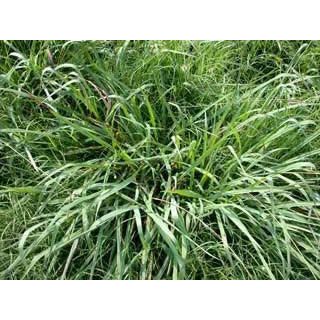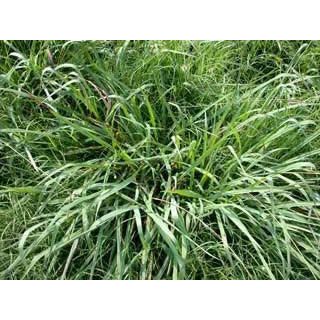Seed Order
The seed may be excellent quality, I won’t know until they are planted. The amount of annoying emails I receive wanting feedback is unbearable. Stop bugging the hell out of your customers!
$14.00
Crimson clover (Trifolium incarnatum) is one of the most colorful forage plants and is frequently seen along roadsides, where it is planted for highway beautification. Crimson clover is a reseeding winter annual with an erect growth habit and a shallow taproot system. The flowers are a brilliant red color, elongated in shape, and often more than two inches long. The leaves are dark green and covered with dense hairs.
Adaptation
Crimson clover is best adapted to the heavier, well-drained soils, performing poorly on dry, sandy, and poorly drained sites. Crimson clover produces more forage at low temperatures than other clovers. It is fairly tolerant of soil acidity and is often seeded in mixture with small grains and ryegrass. Crimson clover is also often seeded into warm-season perennial grass pastures (bermudagrass and bahiagrass) and may reseed under some management conditions.
Crimson clover seed should be planted at 20 to 26 pounds of seed per acre. Most improved crimson clover varieties are adapted to Florida conditions, but they vary in spring maturity. Seeds germinate in the fall, and plants produce very little top growth while developing a strong root system, so very little forage is available for grazing before February.
Grazing should be delayed until 6-8 inches of growth accumulate. Terminate grazing when plants are 3-5 inches in height. Crimson then grows rapidly until flowering begins about mid-April. Forage is very high quality with both leaves and stems readily consumed. Although it is generally grazed, it may be harvested as high-quality hay or silage. If trying to manage for reseeding, reduce grazing pressure for about three weeks when in full flower

The seed may be excellent quality, I won’t know until they are planted. The amount of annoying emails I receive wanting feedback is unbearable. Stop bugging the hell out of your customers!

Excellent quality and shipping

I have not planted yet its to dry n no rain for 10 days plus army worms according to aka Dr Deer

Great seed best 👌

I planted the red clover seed 5 days ago. It is very dry here have not come up.

Coming in really nice

Good pricing and prompt delivery.

Arrived fast! Will be planting in early October!

Have you used your Clover seed for three years now to intercede with wheat. Always does well

I received the Buck Forage Oats and clover seed quickly enough But the clover seed were falling out of the box, and I mean falling out everywhere. The delivery driver said the clover seed were all over the van floor and then they were all over my porch and as I was putting the boxes in storage clover seed were falling out everywhere. I^ve not opened the boxes yet so I don^t know how many clover seed made the trip. The oat seed arrived fine in their separate bags.

Crimson Clover Seed

Seed World shipped fast and was very affordable. Planted right before a rain and already started to sprout.
My initial review focused on the service and quality of the seeds. I wanted to wait until the clover started germinating before writing another review. It was early April, and the clover survived despite the possibility of a freeze. I live in the Ohio Valley, where weather conditions can be unpredictable, but I went ahead and planted my crimson clover. I bought Nitro-Coated & Inoculated seeds, and they grew very well, looking beautiful. I planted five acres to support small wildlife and game and to help the bees. The turkeys and deer have been enjoying munching on it. The clover is growing healthy and bushy, and a lot of it is beginning to have tops. It's almost June, and I'm impressed with the progress. I highly recommend this clover to anyone looking to buy a quality clover at a reasonable price that can't be beaten by other competitors.
Seed World had every kind of seed that I needed and shipped it very quickly. We will be using Seed World for all of our future crop needs.

Sold Out $78.00
Imperial Whitetail Turkey Select Chufa Seed Turkey select is a high quality chufa seed. The plants...

$18.00
Dallis Grass Seed for Pastures Perennial Scientific Name Paspalum dilatatum Seeding Rate 15-20 Lbs....

Sold Out $52.00
Planting Persist Orchard Grass Seed Seeding Rate Seed Persist at 18-20 lbs per acre for...

$9.00
Whistler Winter Peas Whistler Winter Peas, released by Progene Research of Washington, are a semi-leafless,...
Crimson clover (Trifolium incarnatum) is one of the most colorful forage plants and is frequently seen along roadsides, where it is planted for highway beautification. Crimson clover is a reseeding winter annual with an erect growth habit and a shallow taproot system. The flowers are a brilliant red color, elongated in shape, and often more than two inches long. The leaves are dark green and covered with dense hairs.
Adaptation
Crimson clover is best adapted to the heavier, well-drained soils, performing poorly on dry, sandy, and poorly drained sites. Crimson clover produces more forage at low temperatures than other clovers. It is fairly tolerant of soil acidity and is often seeded in mixture with small grains and ryegrass. Crimson clover is also often seeded into warm-season perennial grass pastures (bermudagrass and bahiagrass) and may reseed under some management conditions.
Crimson clover seed should be planted at 20 to 26 pounds of seed per acre. Most improved crimson clover varieties are adapted to Florida conditions, but they vary in spring maturity. Seeds germinate in the fall, and plants produce very little top growth while developing a strong root system, so very little forage is available for grazing before February.
Grazing should be delayed until 6-8 inches of growth accumulate. Terminate grazing when plants are 3-5 inches in height. Crimson then grows rapidly until flowering begins about mid-April. Forage is very high quality with both leaves and stems readily consumed. Although it is generally grazed, it may be harvested as high-quality hay or silage. If trying to manage for reseeding, reduce grazing pressure for about three weeks when in full flower
{% render 'proviews_widget' %}




